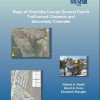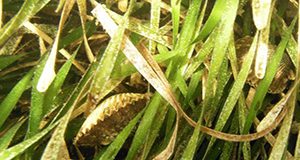Florida leads the country in the number of registered recreational watercraft, with between 867,463 and 921,834 vessels in the state. With so many people out enjoying Florida’s waters, there is significant risk of damage to sensitive coastal habitats such as seagrass meadows. This 4-page fact sheet written by Savanna Barry, Ana Zangroniz, and Joy Hazell and published by the UF/IFAS Florida Sea Grant College Program explains the importance of protecting seagrass meadows by responsible boating and gives tips to boaters about how to practice seagrass-safe boating.
http://edis.ifas.ufl.edu/sg151
Tag: Recreational Boating
Responsible Boating Protects Coral Reefs
Florida is often referred to as the boating capital of the nation, with more than 930,000 registered vessels. Florida’s numerous natural resources such as mangroves, seagrasses, estuaries and coral reefs are a major draw to resident and visiting boaters alike. Outdoor activities associated with boating, such as birding, fishing, swimming, snorkeling, and diving, contribute to the state’s economy. However, increased traffic on the water can bring potential risks, particularly to sensitive ocean bottom habitats such as coral reefs and seagrasses. This 4-page fact sheet written by Ana Zangroniz, Savanna Barry, and Joy Hazell and published by the UF/IFAS Florida Sea Grant College Program gives an introduction to the corals and coral reefs of Florida, provides ecological and economic information, and lists simple steps to ensure that safe boating practices reduce physical impacts on coral reefs.
http://edis.ifas.ufl.edu/sg152
Maps of Charlotte County General Permit Trafficshed Channels and Secondary Channels
 This 33-page collection of maps depicts channels included in the Charlotte County General Permit (GP)1. Each map shows either channel segments within a GP trafficshed or segments in a GP secondary channel system. Written by Robert A. Swett, David A. Fann, and Elizabeth Staugler, and published on EDIS by Florida Sea Grant, October 2014.
This 33-page collection of maps depicts channels included in the Charlotte County General Permit (GP)1. Each map shows either channel segments within a GP trafficshed or segments in a GP secondary channel system. Written by Robert A. Swett, David A. Fann, and Elizabeth Staugler, and published on EDIS by Florida Sea Grant, October 2014.
http://edis.ifas.ufl.edu/sg133
Circle Hooks (SGEF170/SG042)
A circle hook is a fishing hook designed and manufactured so that the point is turned perpendicularly back to the shank to form a generally circular or oval shape. The unique shape of the circle hook keeps the hook from catching in the gut cavity or throat, resulting in higher survival rates for released fish. Learn more in this 2-page fact sheet written by Don Sweat and Steve Kearl, and published by the UF Sea Grant Program, June 2008.
http://edis.ifas.ufl.edu/sg042
SGEB57/SG098 Navigational, Historical and Environmental Perspective of Jupiter Inlet and the Loxahatchee River
SGEB-57, a 2-page full-color map by David A. Fann, Robert A. Swett, and Michael J. Grella, uses natural-color aerial photographs along with historic pictures and maps to help visitors and residents enjoy and appreciate what they can see and access from recreational vessels in the Jupiter Inlet vicinity. Published by the Florida Sea Grant Program, June 2009.
http://edis.ifas.ufl.edu/SG098
SGEB63/SG097 Navigational, Historical, and Environmental Perspective of Charlotte County Waterways
SGEB-63, a 2-page full-color map and guide by David A. Fann, Robert A. Swett, and Elizabeth Staugler, using natural-color aerial photographs, along with historic pictures and maps to help visitors and residents enjoy and appreciate what they can see and access from recreational vessels. Published by the Florida Sea Grant Program, September 2008.
http://edis.ifas.ufl.edu/SG097
An Assessment of Florida Boaters and their Awareness of the Clean Vessel Act and Clean Marina Program (TP151/SG069)
This revised 83-page report provides results from a study to determine boater awareness of the Clean Vessel Act (CVA) and Clean Marina Program, changes in awareness of the CVA since a 1998 assessment, and the practices and attitudes of Florida boaters. The report concludes with recommendations on how to better target future educational and outreach efforts among the general boating population. Written by Robert Swett, Susan Fann and Jan DeLaney, and published by the UF Sea Grant Program, March 2009.
http://edis.ifas.ufl.edu/sg069
TP107/SG083 A Recreational Boater-Based Method for Re-designing the NOS Small-Craft Chart
New to EDIS! TP-107, a 145-page illustrated project report by Gustavo Antonini, Niels West, Charles Sidman, and Robert Swett, reports on a project to determine chart information which would satisfy criteria for safe, modern navigation and promote environmental stewardship. The prototype chart covers the southwest Florida coast from lower Tampa Bay to Charlotte Harbor. Published by the Florida Sea Grant Program, December 2000. Reviewed March 2008.
http://edis.ifas.ufl.edu/SG083
SGEF139/SG084 A Recreational Boater-Based Method for Re-designing the NOS Small-Craft Chart (Executive Summary)
New to EDIS! SGEF-139, a 16-page executive summary by Gustavo Antonini, Niels West, Charles Sidman, and Robert Swett, summarizes a project designed to determine the chart information needs of boaters which satisfy safe navigation and promote stewardship of coastal resources. Published by the Florida Sea Grant College Program, December 2000. Reviewed March 2009.
http://edis.ifas.ufl.edu/SG084

